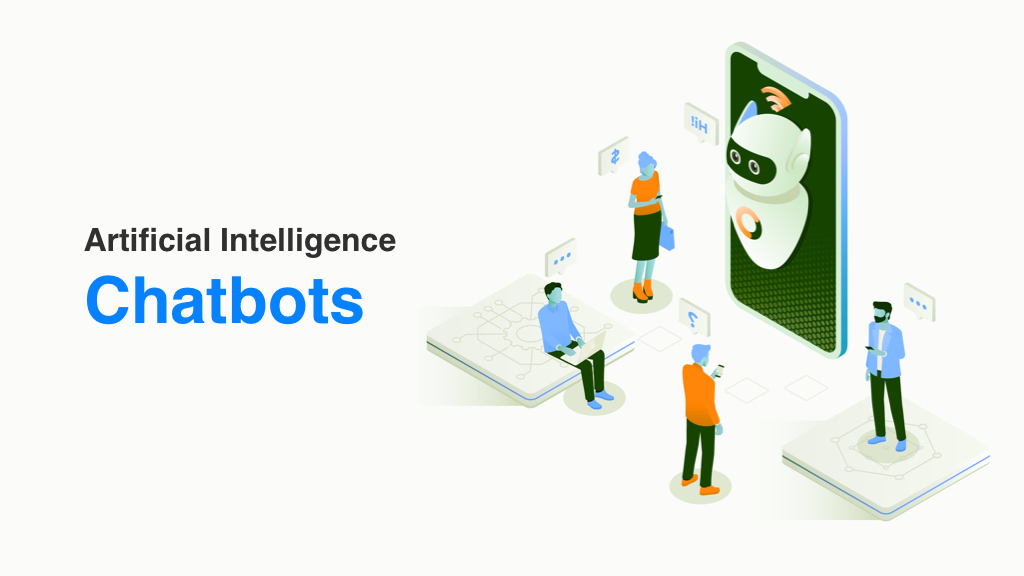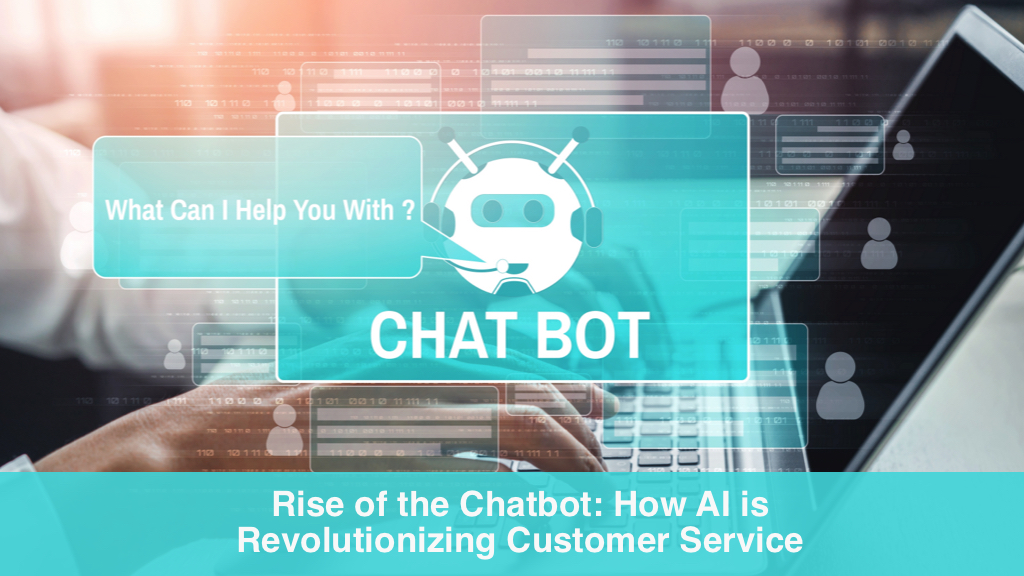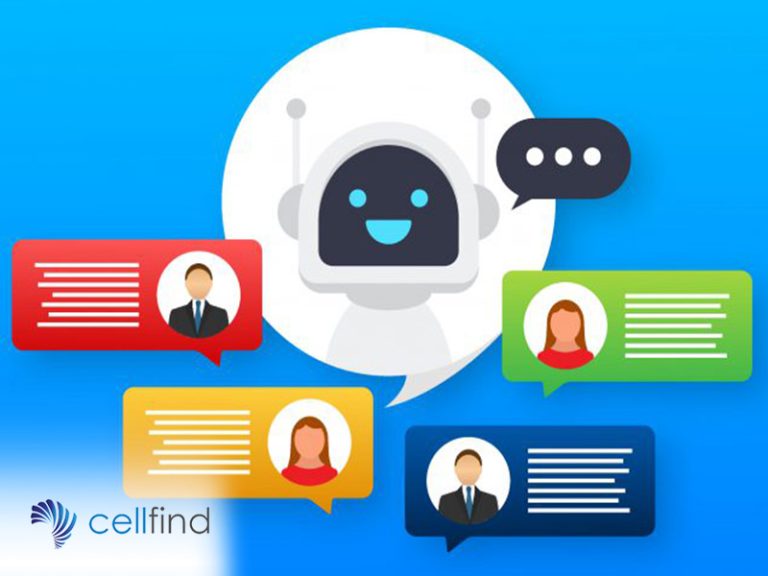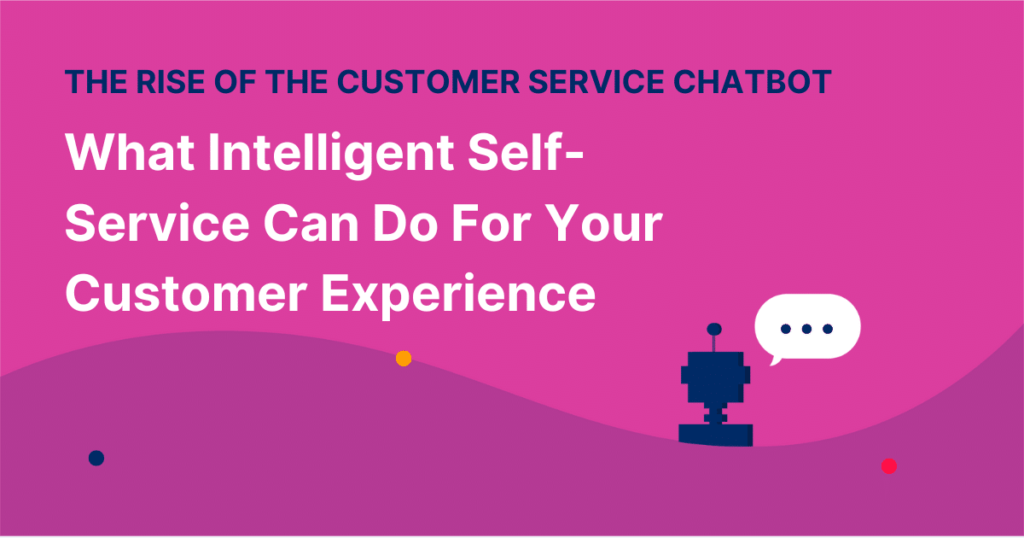Introduction
As an online entrepreneur, my experience has shown that nothing beats exceptional customer service. Today, let’s delve into an exciting trend that’s revolutionizing the online business landscape – the rise of AI-enhanced customer service, or more commonly known – chatbots!
Overview of AI-Enhanced Customer Service
It’s fascinating how technology has transformed the way we do business. Think about it. Only a few years ago, communicating with your customers required human resource. However, the emergence of artificial intelligence (AI) has flipped the coin. AI-driven chatbots have become increasingly popular in providing customer service. It’s not hard to see why. These digital assistants provide prompt service, cater to multiple customers at the same time, and offer a personalized experience. Making high-quality customer service more efficient and cost-effective!
Identifying the Need for AI in Customer Service
Why do we need AI in customer service? That’s a question I asked before integrating chatbots into my business. Over time, I found out that, while it’s essential to maintain human interaction in business, AI can fill gaps where humans can’t. Like answering customer queries at any hour of the day. Let’s face it, we humans need to sleep, but chatbots don’t. They can provide 24/7 customer support, handle multiple inquiries simultaneously, and they do not get tired or irritated. For businesses eyeing improvement in customer service efficiency and reduction of operational costs, integrating AI-powered solutions is worth it.
As we move on, keep in mind that the end goal is making our businesses more sustainable, enjoyable,and profitable. Let’s harness the power of AI-enhanced customer service!

This image is property of dashtechinc.com.
Harnessing AI-enhanced Customer Service: The Rise of Chatbots
Understanding AI & Chatbots
To really grasp the impact of chatbots in the current marketplace, it’s first necessary to delve into the realm of Artificial Intelligence (AI). While it might sound like something straight out of a sci-fi movie, AI has already been integrated into many facets of our daily lives. From voice-activated virtual assistants to smart home systems, AI relies on learning and problem-solving algorithms to mimic human intelligence and improve over time.
Basic Understanding of Artificial Intelligence
Now, onto how this relates to customer service. AI-powered systems are capable of accumulating and processing vast amounts of data at a rapid pace. This enables businesses to provide personalized, efficient responses to customer queries. AI, in the form of chatbots, can carry out tasks such as answering frequently asked questions, scheduling appointments, and providing product recommendations.
Introduction to Chatbots
Chatbots are computer programs designed to simulate conversation with human users, especially over the Internet. They’ve proven to be an effective tool, particularly in the age of instant messaging. They allow customers to communicate with businesses just as they would with a human representative; only the service is faster, and available 24/7.
How Chatbots Operate
But how do chatbots work? Essentially, there are two types: rule-based and self-learning bots. Rule-based bots are preprogrammed to respond in a certain way to specific commands, while self-learning bots utilize machine learning algorithms to comprehend and respond to a wider variety of inputs. As their learning algorithm continues to process more data, these bots become smarter, and their performance improves.
There are certainly potential pitfalls and challenges to adopt chatbots, yet with careful implementation and continuous improvement, they can provide a valuable boost to any customer service strategy. Chatbots have certainly come a long way from their humble beginnings. Leveraging artificial intelligence (AI) to improve customer service, these bots are now an integral part of the modern digital landscape.
Evolution of Chatbots
Until recently, thought of more as novelty than necessity, the advent and advancement of AI has presented chatbots in a new light entirely. They’ve shifted from simple scripted responses to handling complex customer queries with the help of AI. By learning and adapting from every conversation, chatbots provide personalized customer experiences, increasing customer satisfaction in the process.
Historical Context and Timeline of Chatbots
The journey of chatbots started with Eliza, the first ever chatbot developed in 1966. From such modest beginnings, chatbots have evolved through the genius of AI, getting smarter and more efficient with every iteration. The introduction of AI in the ’90s led to the development of smarter bots. The role of chatbots expanded from offering simple customer service to performing complex tasks like handling bookings and orders. Today, they’re everywhere, from websites to social media and customer service centers, serving customers 24/7.
Modern-day Chatbot Capabilities
Today, chatbots, powered by robust AI algorithms, can understand and converse in multiple languages, handle multiple queries at a time, and even demonstrate empathy to an extent. The seamless integration of AI allows chatbots to offer predictions, recommendations, and solutions, thereby enhancing decision-making processes. A prime example of this is virtual assistants, who are often indistinguishable from human operatives. Their efficiency and adaptability have thrust chatbots to the forefront of customer service.
In essence, AI-enhanced customer service, with the rise and evolution of chatbots, is evolving the face of customer interaction, bridging the gap between businesses and customers like me and you. The chatbot evolution also serves as a perfect case study for understanding the potential of AI in enhancing operational efficiency and customer satisfaction in businesses. Chatbots continue to redefine customer service landscapes for various businesses. By employing artificial intelligence (AI), I have noticed an evolving landscape where businesses are using chatbots for better customer interactions and enhanced service delivery.
Role of Chatbots in Customer Service
My initial observation of chatbots in customer service showed how these AI-powered tools are reducing the workload on customer service representatives. Isn’t it amazing how the automated system can handle frequent and repetitive inquiries, freeing up human agents to tackle more complex customer concerns? This efficiency assures customers of immediate responses to their questions, ensuring that their needs are met efficiently.
Types of Customer Service Chatbots
In my journey around chatbots, I have come across those designed to offer customer support while others are designed to guide users in navigating websites or applications. The design of a chatbot largely depends on its intended purpose. For instance, transactional chatbots are designed to assist customers in completing transactions, while informational chatbots provide users with relevant information, acting as a ready reference point for people on the go.
Benefits of Implementing Chatbots in Customer Service
In my experience, the benefits of implementing chatbots in customer service cannot be overstated. Chatbots allow businesses to offer personalized interactions to their customers that significantly improve customer satisfaction. The ability to offer round-the-clock support also means that even in different time zones, client queries can be answered promptly. Plus, the accurate data gathering and analysis capabilities of chatbots provide businesses with valuable insights to refine their services and strategies for enhanced customer service.
Within the evolving tech scenario, it is clear that leveraging AI-powered chatbots will continue to significantly improve customer service operations.

This image is property of dashtechinc.com.
AI-Enhancement in Customer Service
As we delve deeper into the digital age, new technologies are redefining every sector of business. Central to this transformation is Artificial Intelligence (AI), which is now setting a new benchmark in customer service. More specifically, the rise and sophistication of AI chatbots have taken center stage. These digital assistants have dramatically improved the customer service experience, driving businesses closer to their customers. The change is so enormous that AI-enhanced customer service can no longer be considered a mere ‘bonus’ — it’s an absolute necessity.
Driving Customer Service with AI
Let’s start with a simple truth — AI changes the game in customer service. It offers an entirely new level of interaction and potential. AI chatbots are more than just a simple messaging tool. They’re auto-replies on steroids. Through their ability to learn, adapt and evolve, these bots can offer personalized responses to customer queries, deliver accurate product information, provide recommendations based on past purchases, and much more. Sure, they might not have the human touch — but they offer something equally valuable: speed, accuracy, and around-the-clock availability. I’ve seen it all in action, and trust me, AI chatbots are transforming the way businesses interact with their customers.
AI’s Impact on Chatbot Capabilities
The improvement of AI technologies has led to the enhancement of chatbot capabilities. These digital assistants are miles away from where they first started. They’re smarter and faster than ever. For example, using Natural Language Processing (NLP), they can now understand and respond to complex queries more accurately. They’re no longer limited to answering simple FAQs. They can offer technical support, schedule appointments, process orders, and even upsell — all without human intervention. It’s like having a customer service representative that doesn’t sleep.
As we move forward, the emergence of AI-enhanced customer service continues to disrupt the traditional ways we conduct business. Embracing it is no longer optional — it’s an essential part of staying ahead in this digital age. The rise of AI chatbots is just the beginning, and I’m excited to see what the future holds.
Monetizing AI in Online Business
As a business owner, I often explore opportunities to maximize profitability, and the rise of the AI-enhanced customer service has intrigued me. One crucial element of this technological revolution that caught my eye is the concept of chatbots.
How to Monetize AI Chatbots
Monetizing AI chatbots may initially seem like a formidable task. However, with the right approach and some understanding, businesses can turn chatbots into potential revenue streams. I find that an effective method involves utilizing chatbots in upselling and cross-selling products. AI chatbots, with their ability to provide personalized product recommendations based on user behavior, can dramatically increase sales conversion rates.
Another approach I have personally found effective is using chatbots as a lead generation tool. By interacting with website visitors, chatbots can gather valuable information about potential customers, which can later be utilized in targeted marketing strategies.
Potential Revenue Streams from AI Chatbots
Looking at the novel ways to harness the usage of chatbots beyond customer service, it’s evident that they offer numerous potential revenue streams. One conventional method I know is incorporating sponsored products or services within the conversation flow. Businesses can partner with other firms and earn a commission on every concluded sale or lead.
Additionally, premium chatbot services stand out as another feasible revenue stream. Usually, businesses offer basic functionalities for free, while more advanced features or personalized experiences can be unlocked with subscriptions.
Every time I see how AI chatbots have revolutionized the way businesses operate in the online space, I get amazed. Beyond providing enhanced customer service, they are attesting to be a substantial source of revenue. Remarkably, monetizing AI chatbots not only contributes to the bottom line but also enriches the customer experience.

This image is property of www.cellfind.net.za.
I’ve been keeping a close eye on the evolving trends in customer service, and I can’t help but marvel at the meteoric rise of artificial intelligence (AI)-enhanced customer service, particularly in the form of chatbots. Chatbots, powered with AI, have quickly moved from being a buzzword to a service-critical technology, used extensively in various sectors today. They are not just easing customer service but also enhancing business operations and increasing profits.
Case Studies
Successful Implementations of AI Chatbots
Now, let’s talk about a few successful implementations of AI Chatbots. For instance, the online shopping giant, Amazon, made huge strides in the industry by integrating AI chatbots in their customer service. Their chatbot, called “ChatGPT,” which is used in answering customer inquiries, order tracking, and processing returns, has notably improved their customer service experience.
Another example is Bank of America’s chatbot, Erica. Erica has made banking simpler for its customers, answering their queries, helping with transactions, and providing banking tips.
Learning from Failed AI chatbot Adoption
However, it’s not always a success story. Microsoft’s AI chatbot, Tay, is a prime example of a failed AI chatbot adoption. Let loose on Twitter, Tay quickly began imitating offensive and inappropriate content, showing that without right checks and measures even AI can go wrong.
While these are just a few instances, they set a precedent for how AI can transform customer service and create a positive impact on businesses’ bottom line, if used wisely. They also underscore the importance of learning from the failed attempts to avoid unnecessary hurdles and ensure a smoother transition in adopting this emergent technology. Therefore, we must better understand the potential of AI chatbots and harness their capabilities to really make a mark in this AI-infused world.

This image is property of capacity.com.
As we all know, technology is continuously evolving, and with it comes both opportunities and challenges. As a person enthusiastic about the opportunities brought by technology in the business world, particularly in the field of customer service, I’m genuinely thrilled by the emergence and rise of AI-enhanced customer services such as chatbots.
Chatbots are computer programs that simulate and process human conversation. They are enabling businesses to automate several customer service tasks, thus saving time and costs while providing customers instant, round-the-clock support.
However, while chatbots are undeniably a game-changer for customer service, harnessing their full potential comes with its own set of challenges. Two of the most significant obstacles revolve around technical aspects and customer behavior.
Technical Challenges of AI Chatbots
There is no doubt that creating and maintaining an AI chatbot is not a simple endeavor. It requires profound knowledge, skill and determination. One of the most significant challenges here is developing a chatbot capable of understanding and processing natural language just like a human. This involves implementing a complex set of algorithms, linguistic rules and machine learning models.
Another technical challenge revolves around the chatbots’ integration. Since businesses utilize various software for different purposes, it becomes necessary that the chatbot must be compatible with these existing technologies. Moreover, ensuring data security and privacy while using AI chatbots is of paramount importance and poses yet another challenge.
Customer Behavior and AI Chatbots
Human behavior, by nature, is unpredictable and varied, which poses a significant challenge for AI chatbots. Cultivating a chatbot system that adapts to the eccentricities and expectations of different customers is not an easy task. Additionally, some customers might prefer human-to-human interaction, stressing the need for a balanced blend of human and AI-driven customer service.
Despite these challenges, the rise of chatbots signals a bright future for AI-enhanced customer service. It’s not about replacing human interaction entirely, but rather it’s about optimizing our resources and providing an enhanced customer service experience. The journey might be filled with hurdles, but the potential rewards make it an exciting journey to undertake.

This image is property of botcore.ai.
Future of AI and Chatbots in Customer Service
The evolvement of customer service has seen some significant strides. One of these is the rise of AI-powered chatbots designed to enhance customer service. Improved service, combined with cost savings and 24/7 availability, is rapidly positioning chatbots as the future of customer service.
Trends in AI for Customer Service
Chatbots are becoming increasingly proficient at handling complex queries. Advancements in natural language processing (NLP), coupled with machine learning algorithms, have transformed chatbots into conversational AI. By using these technologies, they can understand, interpret, and respond to customer queries in a human-like manner, providing a seamless customer service experience. Businesses are also leveraging AI’s ability to sift through enormous volumes of data to deliver personalized customer service.
Predicted Future Advancements in AI Chatbots
The future of chatbots holds endless possibilities. AI advancements promise to progress chatbots from scripted programs into self-learning engines, capable of understanding context, emotion, and intent. It’s also expected that developments in AI will lead to chatbots performing sophisticated tasks. These might involve managing reservations, processing payments, and even guaranteeing security by detecting fraudulent activities. Also, we might witness the inception of voice-enabled chatbots, which would revolutionize customer interactions entirely.
Harnessing the power of AI to augment customer service is no more just a concept but a reality. The crux of the matter is that the rise of chatbots signifies a transformative era in customer service where customer interactions are more natural, personalized, and efficient. Therefore, as we look to the future, it’s safe to say that AI-powered chatbot technology will become an integral part of our customer service experiences.
Developing an AI Chatbot Strategy
Throughout my journey in the realm of online business, I’ve discovered that modern technology, particularly Artificial Intelligence (AI), is radically reshaping customer service. Nowhere is this more evident than in the rise of AI-enhanced customer service chatbots – automated programs that can engage customers in real, meaningful conversations.
Considerations for Implementing an AI Chatbot
Implementing an AI chatbot seems daunting at first, but it doesn’t have to be, when approached with a strategic mindset. Firstly, it’s essential to have a clear understanding of customer needs and how a chatbot can meet them. It’s not just about automating responses. Instead, it should be about providing solutions to customer’s problems. What made this transition smoother for me was integrating AI chatbots with my CRM system. That way, I was able to analyze customer interaction data much more effectively.
Keys to Successful AI Chatbot Integration
Successful integration of an AI chatbot into your customer service approach is easier than you might think. I started by training my chatbot with scripts of typical customer interactions. The script should encompass not just typical problem-result scenarios but also the tone, language, and style that best represents my brand. And to my wonder, it worked! My interactions seemed more spontaneous and not machine-like.
So friends, if you’re contemplating the AI route to be smarter with your customer service, know that good planning is the first step. Set clear goals, foster an understanding of customer needs, and ensure your chatbot reflects your brand perfectly. This path has led me to reap benefits out of my AI investment and I hope it works wonders for you too. Just remember, it’s all about the customers and their experience!
Conclusion
The changes we’ve seen in customer service due to AI-enhanced solutions like chatbots have been quite transformational. In our investigation into this rapidly evolving landscape, several key insights stand out.
Reflection on Current State of AI Chatbots
The eruption of AI Chatbots in the customer service landscape has significantly altered how we conceptualize customer service management. Businesses of all kinds have implemented these intelligent bots to handle a variety of tasks to complement their existing customer service operations. From answering simple queries to guiding customers through complex processes, these bots are improvising to deliver enhanced customer service tirelessly round the clock. They’ve changed the game in terms of scalability and efficiency.
Final Thoughts on The Future of AI and Chatbots in Customer Service
Looking ahead, my view is one of bold optimism. The future of customer service seems tailored towards AI and chatbots. The potential for advancements in AI technology, along with the prospect of chatbots that can understand and reciprocate human emotions, is exciting. Soon, businesses may be able to deliver even more personalized experiences by understanding customer behavior, preferences and frustrations in real time. It’s not unrealistic to envision a future where AI chatbots will not just respond to problems but preemptively address them even before they arise.
In the end, one thing’s clear: AI chatbots are not just another tech fad. They represent a seismic shift in how businesses can deliver top-notch customer service while keeping operations cost-effective. As businesses continue to embrace this technology and the competition intensifies, one can only expect the rise of AI chatbots to continue on an upward trajectory. The revolution, it appears, is just beginning.
